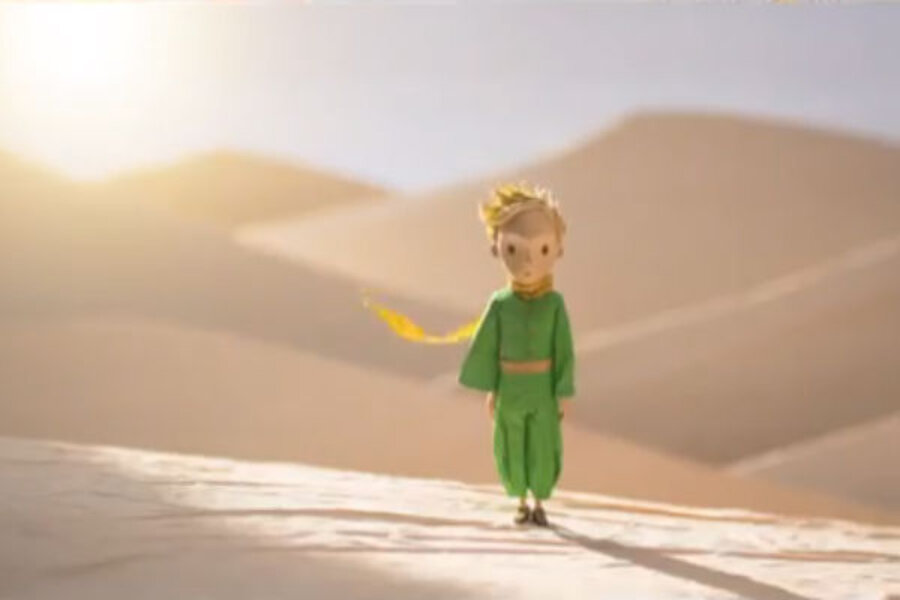'The Little Prince' passes from generation to generation and now to film
Loading...
As families worldwide get a first look at the film debut of “The Little Prince” via a trailer released on YouTube Monday, a wave of nostalgia may follow.
“One sees clearly only with the heart. What is essential is invisible to the eye,” says the fox to the Little Prince in Antoine de Saint-Exupéry’s French children’s classic.
As I watched the trailer in French, a language I don’t speak, it was hard to see what was in front of me on the computer screen because my heart took me back through a montage of how this book has followed me from childhood to motherhood and translated into my relationship with my eldest son.
"The Little Prince" is the first book I ever read all on my own.
My mother, who speaks fluent French, gave me the English version after reading the book to me in French with her own translations as she went along. I was about 6-years-old at the time.
I didn’t understand the book very well then. However, over the years, from time to time, my mother would advise me to re-read it because, she said sagely, “You will find something new in this book every time you read it.”
She was spot on.
Case in point is that in the book, the Little Prince asks the narrator to draw a sheep and rejects several attempts before the man gets so frustrated trying to please the boy that he tosses off a picture of what is essentially a box with holes in it in which the perfect sheep lives.
The Little Prince is thrilled with the result. The narrator in the book and I were equally perplexed when I was a child.
As an adult, I would learn that that passage in the book is parenthood and all of our daily interaction in a nutshell.
As a child, I preferred the drawings of the actual sheep and not the box, so I could not understand why the prince loved the box image so much.
Oh sure, he explained that everything on his planet was very small and this sheep would fit. However, until I had children of my own, I failed to really see the sheep in all its glory as a metaphor for beauty being in the eye of the beholder.
It’s also a reminder to me not to overthink life so much. Sometimes we labor to make a perfect sheep when a box with holes will suffice.
As parents we try and find the perfect holiday gift only to find out worry and money were lost on a child who was better pleased with the big box in which to play for the next week.
That’s because too often we can’t really see what’s in or child’s mind quite as well as we think we can.
The book also teaches us that tame something and to be tamed by another doesn’t mean being enslaved, but rather becoming “unique in all the world” to one another.
Sharing this book with my son made us at once tame and unique to each other and sometimes, to all the world.
When my oldest son, Zoltan, now 21, was just 4-years-old we lived on a sailboat in Florida and I read the Little Prince to him and his little brother, who was two at the time.
Zoltan got more out of it, being older.
Every day when we went to the beach he would take a stick and draw a “sheep” – a.k.a. a rectangle with several “holes” on the side in the sand. Ian would toddle over and accidentally kill the sheep as he tried to give them water through the holes,
Drawn by the constant sheep battle it never failed that someone would come and ask Zoltan if he was drawing LEGOS.
He would tell them they were sheep. Some would then sit and talk with him about “The Little Prince,” while others smiled at me and asked if he’d been evaluated for a disorder.
To the latter I would say, “He’s fine. He’s just very well read.”
Because the trailer for the film is in French – which I still don’t speak – I contacted Zoltan at Virginia Commonwealth University, where he is currently a double major in International Justice and French, for a translation.
Over the course of a Facebook chat session before his exams, Zoltan took the time to do the same thing my mother once did for me as he translated the trailer’s story.
When I asked if he remembered reading the book with me he said ,"I remember the title and not much else, but now I'm looking for it in French to read again when I can really appreciate it." So we all know what's going in his Christmas stocking as soon as I can get to a book store.
Then we chatted about what I remembered about the book and other things that have nothing to do with the book at all.
It was one of the best mommy moments I have had across the childhoods of four boys because it was as if I had gone off in my space ship to search the universe in search of friendship, love, and companionship and come to a place where it was there in a perfect box.
Reading with your children is the universe in a series of small packages that we can hand across generations, languages, and universes as we learn to see each other with our hearts wide open.








